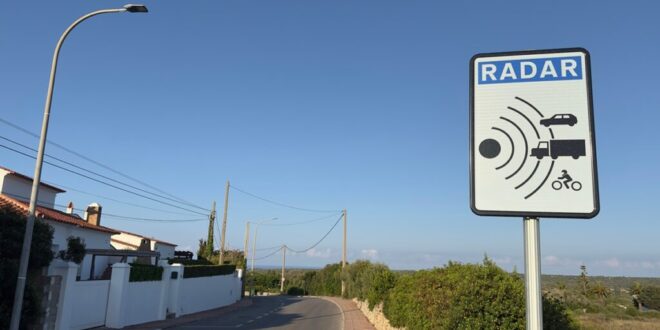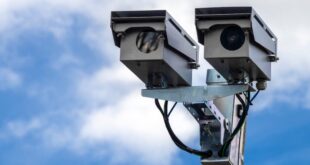Spain’s DGT has lowered the thresholds for speed cameras across the country, in an effort to combat road accidents and improve road safety.
Credit : Shutterstock, Nigel J. Harris
The General Directorate of Traffic in Spain (DGT), has announced an aggressive crackdown on speeding. They have lowered the thresholds for speed cameras to improve the safety of the roads.
Drivers will soon find that radars have become less forgiving. This is especially true on roads where the speed limit is already high.
Spain’s traffic authority reduces tolerances for speed cameras
Before now, motorists would typically be able to exceed the speed limits by 7 or 8km/h before a camera caught them. The new rules will allow fixed speed cameras to activate when a driver exceeds the limit by just 3 km/h on roads where the maximum speed is less than 100 km/h. Cameras will flash on faster roads where the speed limit exceeds 100 km/h. Mobile radars allow for a small amount of leeway. However, they will only allow 5 km/h extra on slow roads and 5% more on high-speed highways.
DGT’s goal is to reduce road deaths. Speeding is still the number one traffic infraction in Spain, and it’s a leading cause of fatal and serious crashes.
High-speed crashes have a shocking impact
DGT does not mince words about the dangers of excessive speeding. The DGT compares crashes with free-fall accidents in order to drive home its message. At 50 km/h, a crash is likened with falling from a window on the third floor. While a collision of 120 km/h would be equivalent to falling off the fourteenth-floor. At 180 km/h the impact is comparable to falling from a 36th-floor window.
Officials stress that these figures are not just theoretical – they represent the real risks faced by drivers and passengers every day on Spanish roads.
The European Union has made speed limiter mandatory on all new cars
In the future, we can expect to see more innovations that will help reduce dangerous driving behaviors. By July 2024, every new vehicle sold in the European Union is equipped with Intelligent Speed Assistants (ISA). This smart system uses GPS and sensors to read road signage and alerts drivers visually and audibly if they are exceeding the speed limit.
The DGT has made it clear that while some motorists might see these measures harsh, their main goal is to prevent accidents and save lives. Spanish authorities hope that by increasing driver awareness and reducing speeds, they can reduce the risk of accidents throughout the country.
The latest news from Spain
 Costa News Spain Breaking News | English News in Spain.
Costa News Spain Breaking News | English News in Spain.





